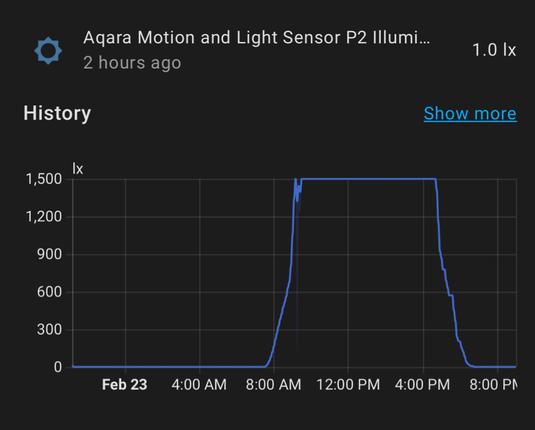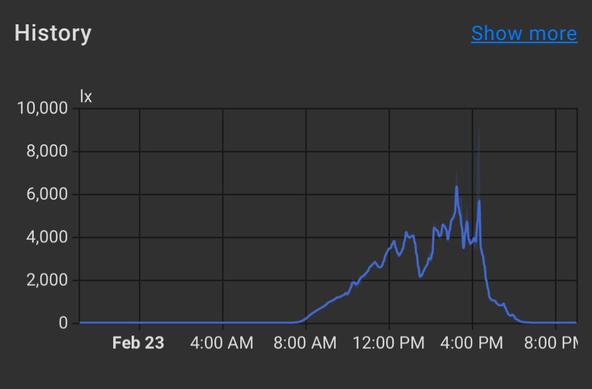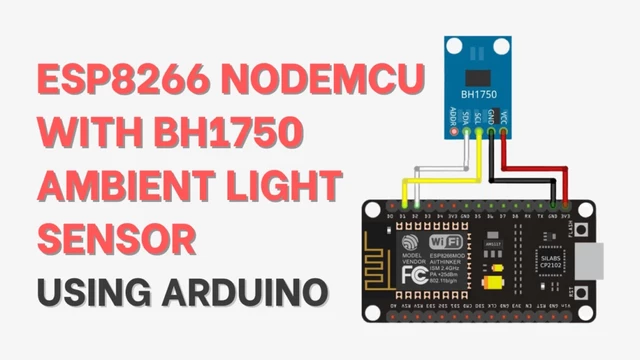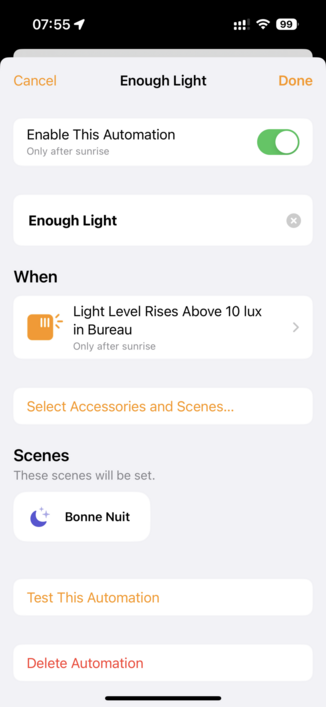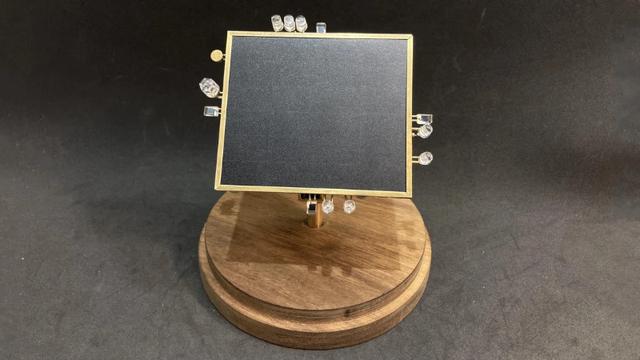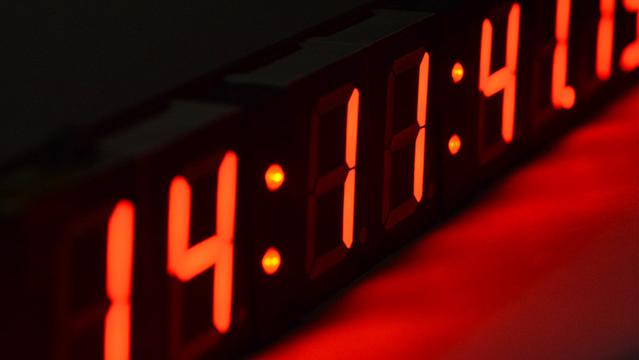Anyone using the Aqara "Motion and Light Sensor P2" ? I set it up in Home Assistant via Matter, but for some reason, it does not go higher than 1500lx. Feels like a setting is wrong somewhere. I have another (non-Matter/zigbee) light sensor in HA and I am seeing values like 5800+lx #homeassistant #homeautomation #matter #aqara #lightsensor
#lightsensor
You Can Use LEDs As Sensors, Too https://hackaday.com/2024/07/23/you-can-use-leds-as-sensors-too/ #microcontroller #ledasasensor #forrestmims #lightsensor #photosensor #photodiode #ledsensor #LEDHacks #op-amp #sensor #News #led
ESP8266 NodeMCU With BH1750 Ambient Light Sensor Using Arduino
https://lededitpro.com/esp8266-nodemcu-with-bh1750-ambient-light-sensor
#esp8266 #NodeMCU #BH1750 #arduino #AmbientLightSensor #LightSensor #lededitpro
Ça y est, j'ai enfin pris le temps de configurer cette automatisation.
#HomeKit #Domotique #LightSensor #Eve
Light-Tracking BEAM Robot Can See The Light
BEAM robotics, which stands for Biology, Electronics, Aesthetics, and Mechanics, is an ethos that focuses on building robots with simple analog circuits. [NanoRobotGeek] built a great example of the form, creating a light-tracking robot that uses no batteries and no microcontrollers.
The robot aims to track the brightest source of light it can see. This is achieved by feeding signals from four photodiodes into some analog logic, which then spits out voltages to the two motors that aim the robot, guiding it towards the light. There's also a sound-detection circuit, which prompts the robot to wiggle when it detects a whistle via an attached microphone.
The entire circuitry is free-formed using brass wire, and the result is an incredibly artful build. Displayed in a bell jar, the build looks like some delicate artifact blending the past and future. Neither steampunk nor cyberpunk, it draws from both with its combination of vintage brass and modern LEDs.
It's a great build that reminds us of some of the great circuit sculptures we've seen lately. Video after the break.
[Thanks to Adrian for the tip!]
#art #robotshacks #beam #beamrobotics #circuitsculpture #lightsensor
LED Brightness Adjustment Uses Itself as Sensor
This is a story about a successful system that nevertheless failed to make the cut. An experimental LED brightness adjustment is something [Mitxela] explored in a project for a high-precision clock; one that shows time down to the nearest millisecond, and won't flicker or otherwise look weird when photographed with a high-speed camera. To pull this off means reinventing many things about a clock display, including how to handle brightness adjustment elegantly. Now, to be clear, the brightness adjustment idea described here is something that did not end up being used, but it's interesting enough that [Mitxela] wrote it up and we're very glad he did.
The idea was to have a smooth and seamless automatic brightness adjustment, ideally with no added components. Since LEDs can be used as light sensors, [Mitxela] saw an opportunity to use elements of the clock displays themselves as sensors. This is how it works: a charge in the p-n junction that makes up an LED will decay at a rate proportional to the amount of light hitting the junction. By measuring the speed of this decay, it's therefore possible to tell how much light is hitting the LED. It's effective and elegant, but there are a few practical issues to deal with.
The first failed idea was to employ as sensors the unused decimal points in the seven-segment LED modules, but that turned out to have issues. One was the common-cathode wiring of the display modules; this makes them very convenient to drive as displays, but made using the decimal point as a light sensor impractical. The other issue was that the built-in diffuser that makes the displays easier to read absorbs a lot of ambient light. A much better option was to use the LEDs in the colon separators between digits, since they're independent. Naturally they still have to light up in addition to being used as sensors, but [Mitxela] made a successful prototype by performing the necessary measurements in between the LEDs being driven by PWM.
Despite how clever and efficient the solution was, in the end what sank it was the fact that the LEDs just don't do a very good job of sensing ambient light for this purpose. The LEDs are simply too directional. Even after sanding away the top (lens) part of the LEDs, they still had a very narrow field of view. As [Mitxela] describes it, tilting the clock towards the ceiling could send it to full brightness, and the shadow of one's head falling across the clock would plummet it into "night mode" dimness. In short, it responded to what was directly in front of it, rather than the ambient light level as a whole.
It's a reminder that sometimes a solution simply won't tick all the right boxes, and it can happen for unexpected reasons. Still, LEDs are versatile things. Not only can they sense light, but as the name implies they're also diodes. As diodes can be used as temperature sensors that means LEDs can as well.
#ledhacks #parts #failoftheweek #led #ledsensor #lightsensor
Nozoïd OCS-2 is not only the synth with one of the meanest, fattest, most badass sounds I've heard... It's also sooo fun to play with, and its interface is sooo smart <3 <3 <3 (all on one arduino!!)
I also hear that when 100 will be sold, its hardware will become free/libre, as its software is already! <3
https://mamot.fr/media/tKCJOGtOZhr4KYmdpUQ
#synthesis #VCO #VCF #LFO #ADSR #semi-modular #lightsensor #beautifulrandom
